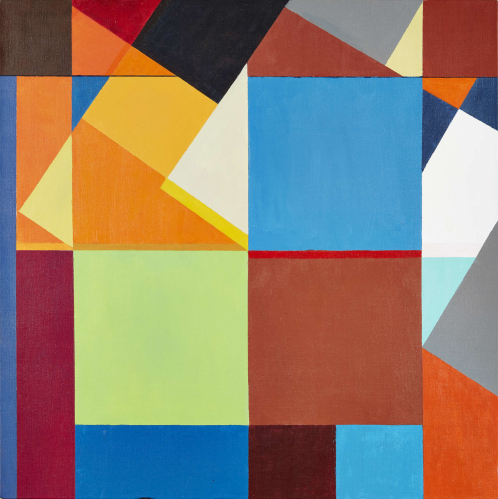Discover the captivating journey of Gillian Wise, a renowned English artist who dedicated her career to applying concepts of rationality and aesthetic order to her abstract paintings and reliefs. Born on February 16, 1936, in Ilford, east London, Wise was immersed in the world of art from an early age. She studied at Wimbledon School of Art and later at the Central School of Arts and Crafts, where she honed her skills and developed a strong affinity for geometry.
Wise's artwork is characterized by sculptural reliefs and structures, often incorporating industrial materials such as aluminium and Perspex. Her compositions exude a formalist sense of logic and sensitivity, with a focus on experimentation and reduction to elemental units of line, color, and plane. She explores the interplay of light, transparency, and primary colors, creating visually striking pieces.
Early in her career, Wise gained recognition among the British constructivists, a group of artists challenging the dominance of American abstraction by embracing rational geometry. She exhibited alongside prominent figures such as Adrian Heath, John Ernest, and Kenneth and Mary Martin. In 1961, Wise became the group's youngest member, solidifying her position as a key contributor to the movement.
During this time, she formed a personal and professional relationship with artist Anthony Hill, exhibiting together and attracting attention with their joint show titled "Reliefs/Structures" at the Institute of Contemporary Arts in London. Their unique bond was immortalized in a double portrait painted by Howard Hodgkin, titled "Anthony Hill and Gillian Wise."
As Wise's career progressed, her artwork gained international recognition, with exhibitions in prestigious venues such as the Victoria and Albert Museum in London, the Tokyo Biennale, and the Nuremberg Biennale. She received notable accolades, including a UNESCO Fellowship and a British Council scholarship, allowing her to study constructivism in Prague and Leningrad.
Wise's artistic journey took a significant turn in the late 1960s when she joined the Systems group, formed by Jeffrey Steele. Alongside other esteemed artists like Peter Lowe, Malcolm Hughes, and Michael Kidner, Wise embraced the principles of systematic art and exhibited in influential shows such as "Matrix" at the Arnolfini Gallery in Bristol and the Arts Council's "Systems" exhibition at the Whitechapel Gallery.
Her involvement with the Systems group brought her numerous successes, including curating the Constructivist section of the 1978 Hayward Annual, as well as being featured in the Arts Council's "Constructive Context" show. However, disagreements over their stance on Marxism eventually led to the group's dissolution in 1975.
Wise's contributions extended beyond her artwork. She curated exhibitions, designed large-scale murals, and taught at renowned institutions such as the Chelsea College of Art and Central Saint Martins in London. Her passion for art education also led her to hold fellowships and scholar positions at esteemed American universities, including the Massachusetts Institute of Technology and Harvard University.
While Wise's exhibitions in the UK became less frequent in the 1990s, she continued to exhibit in Paris and Chicago, showcasing her work in group exhibitions and galleries. Her artistic legacy lives on, with notable inclusions in exhibitions at Tate Britain, Pallant House gallery, and the Southampton City Art Gallery.
Gillian Wise's extraordinary journey as an artist and educator has left an indelible mark on the world of abstract art. Her unwavering commitment to rationality, aesthetic order, and geometric exploration continues to inspire and influence generations of artists.
